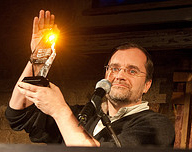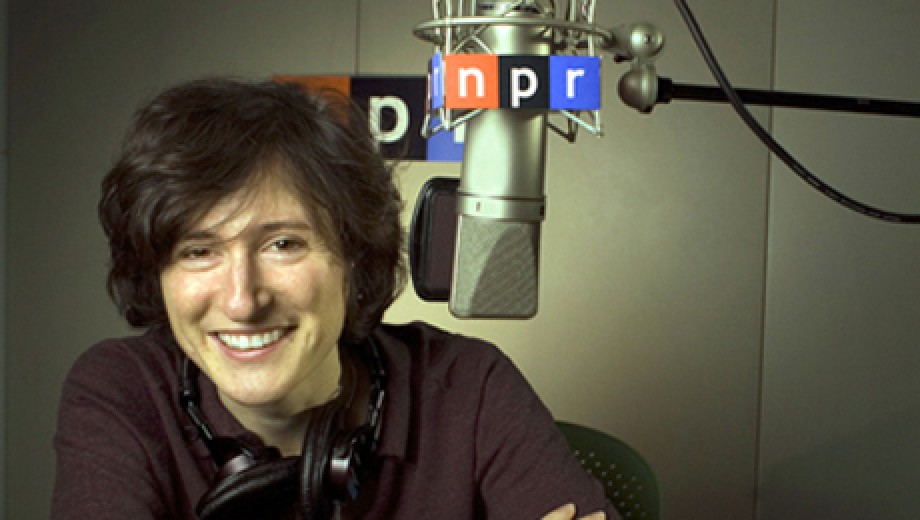Alumni offer ten tips for breaking into journalism.
Neda Ulaby, AM’98
Arts reporter, National Public Radio
Ulaby began her journalism career the old-fashioned way: after graduating from college, she worked in the classified advertising department at the Topeka Capital-Journal. While doing graduate work in film theory (then part of the English department), Ulaby kept freelancing and eventually took a full-time job as managing editor at the Windy City Times. She fell in love with radio when she participated in an NPR training session through the National Gay and Lesbian Journalism Association.
1 - Be prepared to start over.
Ulaby’s first job at NPR was a one-month position as a production assistant—and she had to fight to get that: “There was lots of e-mailing back and forth and cajoling and suggesting and hinting,” she says. She left a job overseeing four staff reporters at the Windy City Times to take a temporary position “opening Susan Stamberg’s mail.”
2 - Put in the hours.
In addition to working as a production assistant, Ulaby reported stories on her own time. “You have to be a machine,” says Ulaby. “I was working twelve or fourteen hours every weekday, and at least one weekend day, for two and a half years.”
3 - Choose your friends wisely.
The early years at NPR were difficult: “It feels a bit like hazing,” she says. “The process weeds out the people who don’t want to do it—who don’t need to do it.” To survive, Ulaby suggests, find mentors within the organization. At the same time, build a network of friends outside the job, so you don’t get too wrapped up in workplace drama.
4 - Follow through on ideas.
Too often, Ulaby says, young people who want to break into radio will suggest promising stories, then won’t follow through. “If you can’t finish the great story ideas that you’ve thought of—just like I couldn’t finish the great dissertation that I thought of—it might be time to start experimenting with a different line of work,” she says. “Perhaps academe.”
Eugenia Williamson, AM’06
Staff writer, Boston Phoenix, and associate editor, The Baffler
Williamson enrolled in the Master of Arts Program in the Humanities (MAPH) partly because she was considering a career in textbook publishing and McGraw-Hill, which had an office in Chicago at the time, required a master’s degree. After writing a thesis on Jonathan Franzen's The Corrections, Williamson graduated and landed a job at the company. “Then they had some kind of weird hiring freeze and the office closed.” she says.
5 - Give it away—at first.
After graduating from MAPH, Williamson paid the bills by temping so she could take two unpaid internships: as research assistant for Rob Elder, a former Chicago Tribune journalist who was writing a book, Last Words of the Executed (2010); and as writer in residence at Venus Zine, a magazine about women in popular culture. She also cofounded the website Literago, where she wrote book reviews and did author interviews. “For free,” she says.
6 - Write on spec.
Williamson’s big break was an unsolicited review of Patti Smith’s memoir Just Kids, which was published in the Boston Globe in 2010. This led to a regular gig as a books columnist for the Globe. Meanwhile, Williamson was contributing music reviews to the Boston Phoenix, where she eventually landed a full-time staff job.
7 - For women: take a stand.
“I think there’s a lot of space for women writers who have strong opinions and critical acumen,” Williamson says. In the world of small magazines especially, “it feels a bit like a boys’ club. I want to see more women in there. Come on, girls!”
Hank Sartin, AM’88, PhD’98
Senior editor, Time Out Chicago
 In 1993, while Hank Sartin was a PhD student in English, a mutual friend mentioned to the Windy City Times editor that Sartin was researching Bugs Bunny (among other film topics). This led to his first published article, “Bugs Bunny: Queer as a $3 Bill.” In 1999, Sartin left Wayne State University, where he was teaching film studies, to pursue a career in journalism.
In 1993, while Hank Sartin was a PhD student in English, a mutual friend mentioned to the Windy City Times editor that Sartin was researching Bugs Bunny (among other film topics). This led to his first published article, “Bugs Bunny: Queer as a $3 Bill.” In 1999, Sartin left Wayne State University, where he was teaching film studies, to pursue a career in journalism.
8 - Write to the assignment.
Write clean copy and stick to the assigned word count. “Speaking as an editor,” he says, “it’s astonishing how often someone gives you double the length you asked for.” He showed his first article to four people he trusted before turning it in. As a result, he says, the article was published with very few changes, “which is unusual for writers.”
9 - Send a thank-you note.
After the Bugs Bunny piece was published, Sartin sent a follow-up note to the editor, thanking him for the opportunity and asking to be kept in mind for future articles. This led to an assignment for another feature—so Sartin sent another thank-you note—and eventually a paid weekly gig as a film reviewer that lasted five years.
10 - Cobble it together.
When he left Wayne State, Sartin “threw himself on the mercy of Chicago,” he says. He wrote articles for the Chicago Free Press and the Reader, led film discussion groups, and took a three-year appointment as writing adviser for MAPH. A regular television column for Time Out eventually led to a staff position as film writer: “I finally got a full-time job in journalism at 40.”

